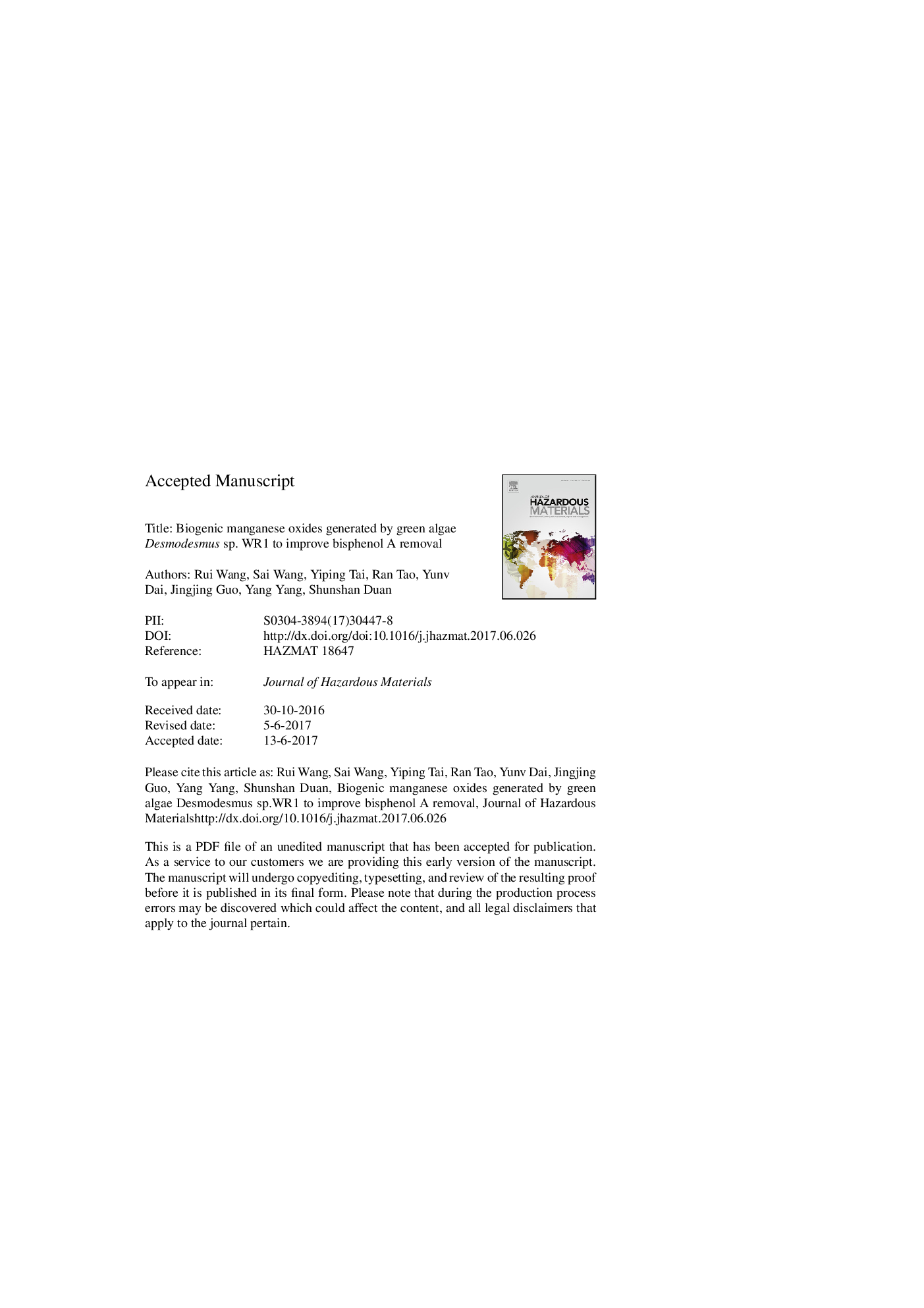| Article ID | Journal | Published Year | Pages | File Type |
|---|---|---|---|---|
| 4979351 | Journal of Hazardous Materials | 2017 | 34 Pages |
Abstract
Biogenic manganese oxides (BioMnOx) have attracted considerable attention as active oxidants, adsorbents, and catalysts. This study investigated the characteristics of algae-generated BioMnOx and determined its oxidative activity towards bisphenol A (BPA), an endocrine disrupter. Amorphous nanoparticles with a primary Mn valency of +3 were found in BioMnOx produced by Desmodesmus sp. WR1. The mechanism might be that algal growth created conditions favorable to Mn oxidation through increasing DO and pH. Initial Mn2+ concentrations of 6, 30, and 50 mg Lâ1 produced a maximum of 5, 13, and 11 mg Lâ1 of BioMnOx, respectively. Mn2+-enriched cultures exhibited the highest BPA removal efficiency (â¼78%), while controls only reached about 27%. BioMnOx may significantly promote BPA oxidation in algae culture, enhancing the accumulation of substrates for glycosylation. Moreover, continuous BioMnOx increase and Mn2+ decrease during BPA oxidation confirmed Mn oxide regeneration. In conclusion, Mn oxide formation by microalgae has the potential to be used for environmental remediation.
Related Topics
Physical Sciences and Engineering
Chemical Engineering
Chemical Health and Safety
Authors
Rui Wang, Sai Wang, Yiping Tai, Ran Tao, Yunv Dai, Jingjing Guo, Yang Yang, Shunshan Duan,
